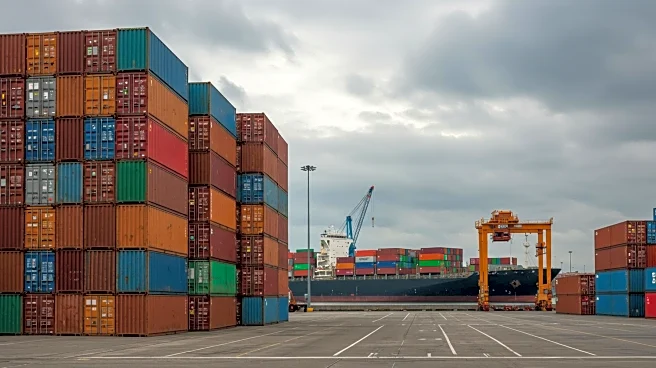Rapid Read • 8 min read
The freight rail and intermodal sectors are experiencing uneven market conditions, influenced by pandemic-related volume shifts and subsequent partial rebounds. In 2024, U.S. rail carloads saw a 2.4% year-over-year decline, marking the second-lowest total since 2020. Conversely, U.S. intermodal volumes reached 13.84 million containers and trailers, making 2024 the third-highest year on record. Recent data from the Association of American Railroads (AAR) indicates a 2.5% year-over-year increase in U.S. rail carloads through May, suggesting a gradual recovery. Intermodal volumes also showed a 6.7% annual increase, continuing a 21-month growth trend. Despite a modest 0.6% annual increase in May, the overall outlook remains positive, with analysts predicting stronger recovery as the year progresses.
AD
The recovery in the rail and intermodal sectors is significant for the U.S. economy, as these sectors are crucial for freight movement and supply chain efficiency. The increase in rail carloads and intermodal volumes suggests a stabilization that could lead to improved logistics and transportation services. This recovery may benefit industries reliant on freight transport, such as manufacturing and retail, by reducing delays and costs associated with logistics. Additionally, the positive outlook could encourage investment in infrastructure and technology within these sectors, further enhancing their capacity and efficiency.
As the year progresses, stakeholders in the rail and intermodal sectors will likely focus on maintaining and enhancing the recovery momentum. Companies may invest in technology and infrastructure improvements to support increased volumes and efficiency. Analysts will continue monitoring market conditions to assess the sustainability of the recovery. The Quest for Quality awards highlight the performance of carriers and service providers, which may drive competition and innovation in the industry. Continued growth could lead to strategic partnerships and expansions, benefiting the broader logistics and transportation landscape.
The recovery in the rail and intermodal sectors may have broader implications for environmental sustainability. Increased efficiency in freight transport can reduce emissions and energy consumption, aligning with global efforts to combat climate change. Additionally, the focus on technology and infrastructure improvements may lead to advancements in eco-friendly practices and equipment. The industry's recovery could also influence labor markets, potentially creating job opportunities and requiring workforce development to meet evolving demands.
AD
More Stories You Might Enjoy










